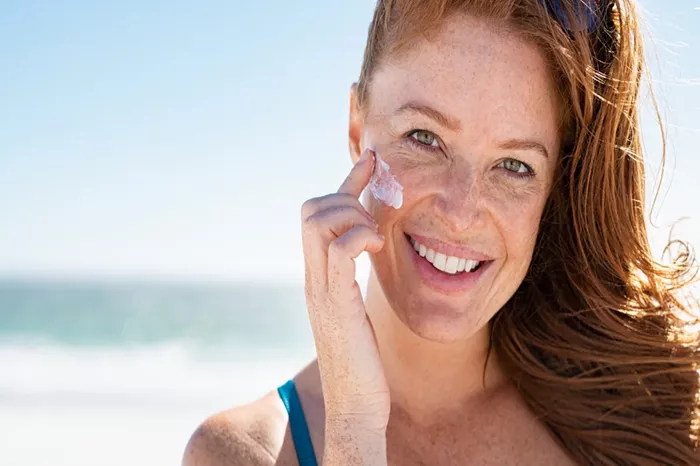As Chicago prepares for more sunny days ahead, it’s crucial to prioritize skin protection, especially with rising rates of skin cancers like melanoma, according to the Skin Cancer Foundation.
Reset recently interviewed Dr. Smita Aggarwal, assistant professor of dermatology at Rush University, to offer essential insights into Sunscreen 101 and common skincare mistakes that compromise skin health.
Understanding UV Damage
Ultraviolet (UV) radiation from the sun comprises two types: UVA and UVB. UVA, accounting for 95% of solar UV radiation, penetrates deeply into the skin, accelerating aging by damaging collagen and elastin. It is also present in tanning beds. UVB, though less pervasive, poses a significant risk by causing DNA mutations that can lead to skin cancer.
Sunscreen Types and Their Differences
Dr. Aggarwal distinguishes between mineral and chemical sunscreens. Mineral sunscreens like zinc oxide and titanium dioxide create a physical barrier, reflecting UV rays from the skin’s surface. In contrast, chemical sunscreens absorb UV rays and convert them into heat. Individuals with sensitive skin or eczema may prefer mineral sunscreens to avoid potential irritations associated with chemical variants.
Common Sun Protection Mistakes
Dr. Aggarwal highlights several misconceptions about sunscreen usage, including over-reliance on SPF numbers rather than frequent reapplication every two hours. She recommends SPF 30-50 as adequate for most skin tones, emphasizing that higher SPF levels like 100 offer negligible additional benefit.
Skin Cancer Awareness
The most prevalent skin cancers include basal cell carcinoma, squamous cell carcinoma, and melanoma, affecting one in five Americans by their 70s. While lighter skin tones and sun-exposed regions face higher risks, individuals with darker skin tones are also susceptible to skin cancer and should prioritize preventive measures.
Key Takeaways for Effective Sun Protection
1.Apply sunscreen in the morning and reapply every two hours.
2.SPF 30-50 provides sufficient protection; higher SPF levels are unnecessary.
3.Use adequate sunscreen—a shot glass worth—to ensure effective coverage.
4.Wear sunscreen even on cloudy or rainy days and when in the shade.
5.Supplement with protective clothing like hats and sunglasses for comprehensive sun protection.
By adhering to these expert recommendations, individuals of all skin tones can safeguard their skin health against the damaging effects of UV radiation and reduce their risk of developing skin cancer.
Related topics:
The New Era of Sunscreen: Skincare Brands Lead the Charge
Protect Yourself from Skin Cancer: Tips for Sun Safety
What Cream Is Good For Sun Spots And Freckles?


